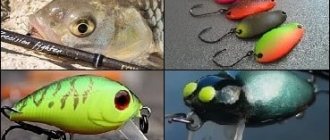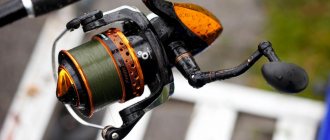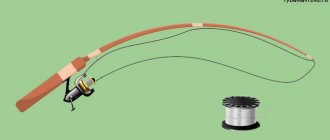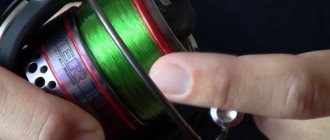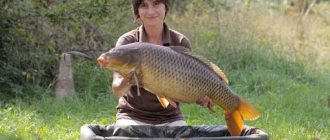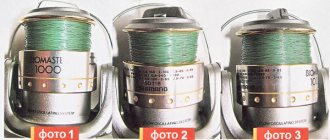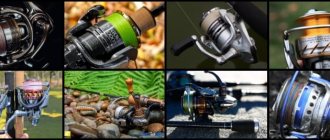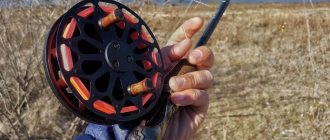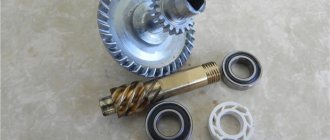Introduction
An integral attribute of spinning fishing is a comfortable and reliable fishing rod. When equipped, the coil becomes a mandatory element.
And if in Soviet times fishermen were offered about 5 models, today the choice is complicated due to the abundance of various modifications . But such a rich assortment allows you to find exactly the reel that fits perfectly into your spinning tackle.
So before purchasing this part, the angler should already have at least a fishing rod.
Types of coils
Currently, there are three clearly defined groups of reels according to the design for equipping a spinning rod.
Each of them can become an indispensable part for certain fishing conditions.
- The old and almost completely rejected by fishermen inertial reel today is experiencing a second youth . The main disadvantage of these models was the inconvenience that arises when casting bait. If the reel drum spun easily, you had to hold it with your finger. Otherwise, the speed of rotation would outpace the rewinding of the fishing line, which resulted in its tangling. The novice angler was more interested in unwinding his “beard” than in catching a predator. When the reel was artificially slowed down, it was impossible to cast a light bait far from the shore. Nowadays, reels have appeared that are free of such disadvantages. In this regard, spinners are gradually taking a closer look at them again.
- The most popular spinning reel for fishing in freshwater areas is the spinning reel. “Meat grinders” were liked by many due to their ease of use and high reliability. In these models, the line is wound onto the spool perpendicular to the line of the rod. This helps distribute any thread evenly throughout the spool. When the line guide bracket opens, the line comes off the spool with the slightest pull. The only drawback is the formation of waves on some types of thread. But for any spinning rod it will not be difficult to find the smallest or largest “meat grinder”.
- The most powerful spinning reels are multipliers. They have proven themselves to be excellent when casting heavy baits, as well as during trolling. Some walleye hunters at night also prefer baitcasters. They allow you to control the bite of a predator with your fingers, between which the fishing line passes.
I would advise a novice fisherman to get acquainted with spinning fishing on reservoirs with a spinning reel.
Ways to wind fishing line on a reel
Ideally, you would use a special machine. The line is fed initially with little tension, as a result the turns lie tightly. Naturally, we will refuse to purchase the device. You can do it yourself.
But since at the moment it is not there, and you need to wind the fishing line now, I offer you a simple and effective method to achieve correct, high-quality winding. The coils lie evenly and tightly. This can be done both at home and directly while fishing.
If you are predisposed to use braided cord, then I recommend treating it with a special sislicone lubricant directly on the reel before filling the spool. It is sold in aerosol cans. It's inexpensive.
If you have to wind a simple, monofilament line onto a reel, then processing will not be necessary.
So. The method is simple. At home :
- screw the reel to the spinning rod;
- pass the tail of the fishing line through the first, largest, ring and secure it to the spool. I used the Arbor node at one time.
But then he moved on to a better option.
- I pour water into a bucket or bathtub and throw a reel of fishing line or silicone-treated braid into it.
- Having adjusted the reel's clutch (it should not be tightly twisted; if too much force is applied, the clutch should then work) and with my free left hand (I'm right-handed) I create tension on the fishing line. With my right hand I begin to rotate the reel handle. There's no hurry. We do everything correctly and accurately.
If winding the fishing line was carried out during the fishing itself, then we go through the same stages, and throw the reel into the water near the shore. Just watch where you throw it. Of course, this should not be done in extreme conditions.
Wet monofilament fishing line is less subject to heat during friction, and wetted braided cord lays more compactly and evenly, tested.
Sea fishing reels
Sea fishing enthusiasts most often require special reels. This is due to the different composition of the ichthyofauna and the characteristics of the environment.
Considering the size of the sea fish, the first thing required is a reliable and impressive design that is not afraid of salt water and powerful jerks of large individuals. In this regard, when choosing a coil, you should pay attention to the quality of insulation of rubbing parts from the penetration of aggressive mineral salt solution.
For sea fishing, experienced anglers prefer to use three types of reels:
- inertia-free models;
- animators;
- electric coils.
Spinning reels for sea fishing differ from their freshwater counterparts in their larger sizes and the presence of protective seals.
Marine multipliers are most often made in the form of a monolithic structure. The coil is sealed and highly resistant to corrosion. Aluminum is usually used for injection molding.
An electric baitcasting reel becomes an ideal option for deep-water fishing. These models are used for fish species such as cod, pollock, halibut, grouper, red snapper, etc.
Basic guidelines for purchasing a spinning reel
The volume of the spool for the reel. Volumes vary from one thousand to four thousand and above. This indicator indicates how many meters of fishing line you have at your disposal. For example, a two thousand spool holds one hundred meters of 0.2 millimeter fishing line. It is also the most optimal for many fishermen.
Winding onto the spool in a spinning reel is carried out in three ways - a straight cone, a cylindrical method and a reverse cone. Regardless of the winding method, make sure that the fishing line is wound onto the parts evenly, not wavy or intersecting. Otherwise, you risk tangling the line and losing your prey. The use of an endless screw does not affect this quality. Many companies have abandoned its use when twisting fishing line in a reel.
When purchasing, check the performance of the future purchase. The coil should not make any noise, crackling or vibration. Of course, you will have to lubricate the device in the future, but the seller’s belief about the new model that “Lubricate it and everything will go away” should alert you.
The spool bracket for holding the fishing line must be well fixed. Do some experiments. Imagine you're casting, opening the brace, and see what happens next. If the bracket remains in the position in which you left it, then it is secure. Only your forceful movements should open and close the bracket.
Try to choose a device from various foreign companies that have managed to make a name for themselves. Otherwise, when purchasing from a Chinese manufacturer, you run the risk of parting with money again. Spare parts may not be secured or made from cheap materials. And well-known brands are ready to provide you with ultralight reel products at affordable prices. The presence of what is advertised by some is just marketing, nothing more.
Scheme of a spinning reel with a front clutch
Find out which spare part is on the line guide spring. It is not recommended to purchase a device with a pin-type spring. Otherwise, you will have to use spare ones, which are sold separately. With an endless screw this problem can get worse.
And last but not least. You should not purchase a device without your own spinning rod. It is necessary to try it directly on all the fasteners so that the inertialess reel sits in place.
And naturally, the weight of the reel is important. The lighter it is, the fewer problems there are in handling it. If lightweight alloys were used in the production of the reel, it will definitely cost more, but the quality will also be higher.
Subtleties of choosing a spinning reel
When choosing a reel for a spinning fishing rod, a novice fisherman should pay attention to the following points:
- The most important parameter of any reel is considered to be smooth operation. This indicator primarily determines the sensitivity of the entire gear. The uniformity of winding of the fishing line often depends on the smoothness. This property determines the casting range of the bait.
- The size of the spool is most often indicated on its side surface according to the Shimano standard. The number 1000 indicates small parameters of the model. It also means that 100 m of monofilament with a diameter of 0.1 mm is required to fill the spool. This reel is suitable for ultralight lovers. For jig fishing on a deep river, it is better to use the 3000 models.
- The functionality of the line guide bracket is checked by opening and closing it. In the open position, the shackle should not close spontaneously. Particular attention is paid to the easy rotation of the winding roller.
- The presence of a friction brake in a spinning reel is a must. A correctly configured clutch allows you to release the line during sudden jerks of the predator. The brake tension adjuster can be installed at the front or rear. From personal experience I had to verify the benefits of the friction clutch. Without checking the brake setting before fishing, I hooked a large pike. The presence of strong braid and a metal leash played a cruel joke on me. The toothy predator obediently walked to the shore, making short pushes. When I began to look where it was best to approach the water, the pike turned around and sharply rushed to the middle of the lake. After the descent, I found a fully straightened hook on the spoon.
- It is best to select the weight of the reel directly on the rod. After installing it on the spinning rod mount, you need to take the fishing rod in the area where the handle transitions into the blank. If the horizontal position of the tackle is maintained, the reel and rod fit together.
- For a spinning player, it is important to choose a model with a comfortable handle. Here, every fisherman has his own preferences. The main criterion will be the smooth rotation of both the entire handle and the small handle on it.
Tip: Many anglers prefer to choose a reel based on the length of the spinning rod. This is a simplified, but quite effective opportunity to quickly complete the gear. For example, for large spinning rods (2.7-3.3 m) a “meat grinder” of 2500-3500 is required. When assembling an ultralight fishing rod, the length of which is 2.1-2.4 m, lightweight models 1500-2000 are ideal.
How to choose a spinning reel
Smooth running is the main parameter of a spinning reel. When rotating the reel handle, there should be no noise or vibration. When buying new reels, this parameter is good for everyone. The trouble is that it begins to manifest itself later. Smoothness is lost especially quickly in cheap plastic devices. Therefore, it is better to choose reels with a metal body. They are reliable and durable. When fishing, you should hear the rustling of grass, and not the squealing and crackling of the reel.
Gear ratio
This is a parameter that I would pay attention to if you yourself understand what kind of fish you are hunting. If you find any one, then the reel can be with any gear ratio. If you take this seriously, pay attention to the markings indicated on the reel. Among them you will see something like “Gear Ratio 5.2:1”. This marking indicates that for a full turn of the reel handle, the pin makes 5.2 turns. This is a fairly powerful reel designed for large bottom fish. For catching pike, perch or pike perch, a reel with a lower gear ratio, around 4:1, is better suited.
Friction brake
As a rule, the clutch is located behind the reel, sometimes in front or on both sides. It would be nice to configure it correctly. The friction brake dampens the jerk of large fish during a bite and helps to avoid line breakage.
If the regulator is located on the back of the reel, then when fishing for large prey it can be further adjusted on the go.
To initially adjust the friction brake, you can tie the end of the fishing line to something heavy and, while pulling the rod at 90-120 degrees, set the friction so that it operates at approximately 80% of the load. At 100% the line should break
In fact, for spinning rods three or more meters long, the friction brake is not so important, because the jerk will smooth out the end of the rod. But for short and stiff rods the function is undoubtedly useful.
Spool
A spool is a drum on which the fishing line is stored. It wraps around it and unwinds when casting. The larger it is, the better, but it is advisable that it be metal, especially if you are going to catch a predator with braid and not monofilament.
Choice by price and manufacturer
Spinning reels are mass produced by various companies all over the world.
The best samples are produced by the following companies:
- Shimano can be called a classic of the genre today .
- A large share of the fishing accessories market belongs to the Swedish concern Abu Garcia .
- The Japanese Daiwa has a wide range of high-quality reels .
- Banax manages to compete with the giants not only in price, but also in quality .
- The American company Penn International is ready to satisfy the demand for both elite types of reels and budget products.
- Numerous Chinese manufacturers are especially suitable for beginner spinners . Despite the fact that products from the Middle Kingdom are inferior to world leaders in the field of quality, for a beginner such reels will be the best option.
When choosing a spinning reel, the opinion of an experienced friend is often decisive. He fishes in the same area as the newbie and visits the same stores. They don't always carry Shimano or even Banax products. But there are other models tested on fishing. So why not equip your first fishing rod with such a reel?
Selecting a baitcasting reel
A multiplier reel is essentially a mini winch. This is a powerful unit for landing heavy fish.
The main advantage of a baitcasting reel, besides its power, is that the line does not twist , like a spinning reel. The casting range of a multiplier is approximately two times greater than that of a spinning bait. Accordingly, the price is higher. If you throw further, you pay more.
You should also know that not every rod can support this type of reel, and not everyone will be able to mount it.
